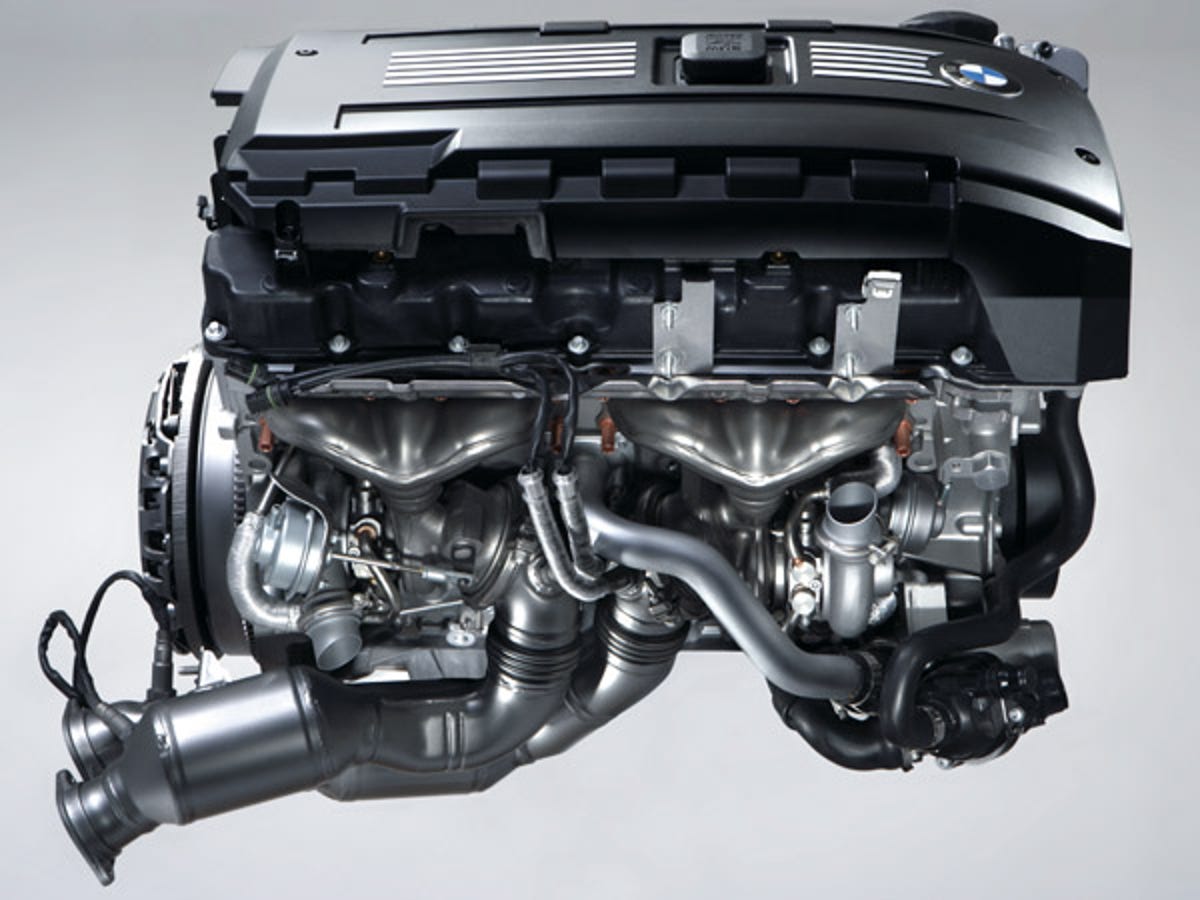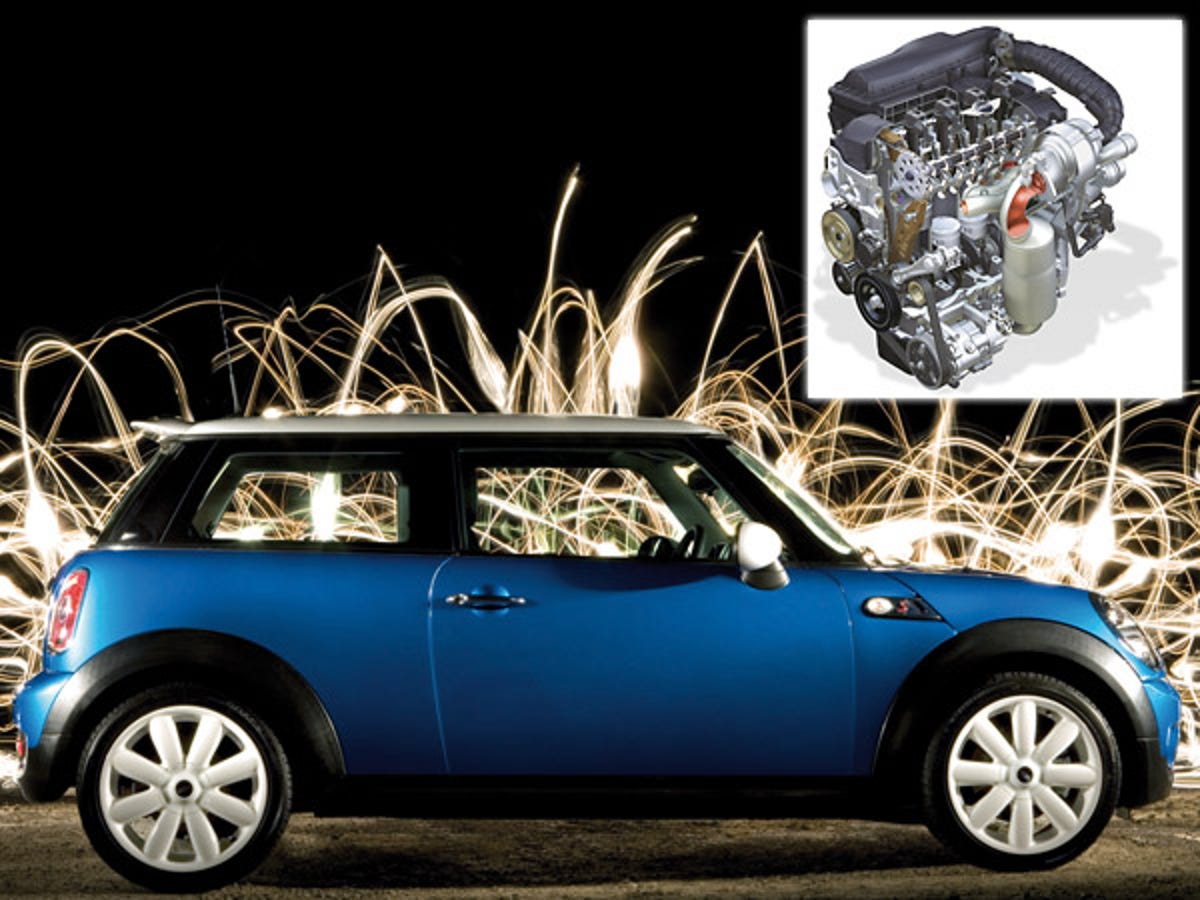Photos: BMW scoops pool at 2008 International Engine of the Year awards
At this year's International Engine of the Year awards, BMW took out five of the 11 categories on offer, while its 3-litre twin-turbo engine also successfully defended the overall title it won last year.

At this year's International Engine of the Year awards, BMW took out five of the 11 categories on offer, while its 3-litre twin-turbo engine also successfully defended the overall title it won last year.
Engine of the Year 2008: BMW 3-litre twin-turbo
There are 11 separate categories voted on by a jury of 65 motoring writers from 32 countries, with the winners in the eight capacity related classes then eligible for the overall award. In the final count the winner of the 2.5- to 3.0-litre class was BMW's 3-litre twin-turbo engine, which powers both the 1-Series and 3-Series. It easily beat the nearest contender, VW's twincharger TSI engine, the first engine which features both a supercharger and a turbocharger, by 100 points.
Best New Engine of the Year: BMW 2-litre twin-turbo diesel
With its aluminium crankcase, BMW's latest diesel is impressively 17kg lighter than the engine that it replaces. Large diameter intake ducts, third-generation common-rail fuel injection and two-stage turbocharging mean that it boasts more power, better fuel economy (4.7L/100km) and fewer emissions (148g/km). With 204bhp (152kW) of power it breaks through the 100bhp per litre barrier, which was once the preserve of performance-oriented petrol engines.
Currently this engine is fitted to BMW's 1-Series in Europe (badged as the 123d), however, it has yet to be confirmed for Australia.
Green Engine of the Year: Toyota 1.5-litre Hybrid Synergy Drive
Having won the Best Fuel Economy category four years in a row, from 2004 to 2007, the Prius's engine has taken out the replacement category, Green Engine of the Year. The Prius's drivetrain consists of a 57kW 1.5-litre four-cylinder engine and 25kW electric engine, returning a claimed combined consumption rate of 4.4L/100km. Energy which is normally wasted in a motor vehicle — like the heat given off during braking — is recaptured by the Prius to charge its battery pack. Depending on the situation, either one or both of the engines will be driving the car with a seamless transition between driving modes.
Its winning margin was slim this year, just three points over the BMW's 2-litre turbo-diesel which automatically shuts itself down at traffic lights.
Best Performance Engine: Porsche 3.6-litre turbo
With five engines separated in the end by just 10 votes, this category proved to be this year's closest contest. Porsche's turbo saw off challenges from the 5-litre V10 in BMW's M5 and M6, the 4-litre V8 from the BMW M3, Ferrari's 6-litre V12 which does service in its 599 GTB and Nissan's 3.8-litre twin-turbo six, the motivation behind its giant-killing GT-R.
Porsche's boosted flat-six engine comes with two specifications: 353kW for the 911 Turbo and 390kW for the GT2.
Sub 1.0-litre: Toyota 1.0-litre three-cylinder
Toyota's 998cc engine might only boast 50kW of power and 93Nm of torque, but when fitted to the company's sub-Yaris Aygo (also sold as the Citroen C1 and Peugeot 107) it delivers economy of 4L/100km and emissions of only 109g of CO2 per km. The judges weren't just impressed with its frugality but its low weight — at 67kg it is the world's lightest internal combustion engine — and its fun factor.
The engine is also used in various Daihatsus, as well as overseas versions of the Yaris.
1.0- to 1.4-litre: VW 1.4-litre TSI Twincharger
VW's Twincharger only made it to Australia last year in the Golf GT, but it's been making waves in Europe for a few years already, winning this category in both 2006 and 2007, as well as being crowned Best New Engine in 2006.
When car makers fit a turbocharger or supercharger to an engine they aim to extract power and torque equivalent to a larger engine, while retaining most of the size and weight benefits of the smaller engine. There are downsides though, with drivers of turbo-engined cars often complaining about the wait before the turbo spools up and delivers its wad of torque; this is because the turbocharger is driven by engine's exhaust gases. While superchargers suffer from other issues, they suffer none of this "lag" as they are driven directly by the engine.
VW's TSI is the second production engine — after the Nissan Micra Superturbo of the late 80s — to feature both a supercharger and turbo. With 125kW of power and 240Nm of torque the TSI returns an economy figure of 7.7L/100km. VW's standard 2.0-litre engine has less power (110kW and 200Nm) yet consumes more petrol (8.0L/100km) and, consequently, emits more CO2.

1.4- to 1.8-litre: BMW/Peugeot/Citroen 1.6-litre turbo
This engine, which sees service in the Mini Cooper S and the Peugeot 308, impressed judges with its combination of power and fuel efficiency. In its application in the sporty Mini, it generates 125kW of power and 240Nm of torque (260Nm on overboost), while returning an official fuel economy rating of 6.2L/100km and CO2 emissions of 149g/km.
1.8- to 2-litre: Volkswagen Group 2-litre turbo
The vast Volkswagen Auto Group spans everything from the affordable (VW, Seat, Skoda) to the luxurious (Audi, Bentley) and the completely bonkers (Lamborghini, Bugatti). Naturally, with such a vast sprawling empire, car bits and, sometimes, entire cars are shared across brands. One of the more prominent bits of sharing that goes on is in the powertrain department.
The 2-litre turbo, which took out the 1.8- to 2-litre class for the fourth year in a row, powers a range of vehicles, including the VW Golf GTI, Skoda Octavia, VW Eos and Audi TT. The engine's tuning varies from model to model, but in the performance oriented Golf GTI it has 147kW of power and 280Nm of torque. When mated to the VW Group's dual-clutch transmission, it drinks 8L/100km and emits 192g of CO2 per km.
2- to 2.5-litre: Subaru 2.5-litre turbo
Over the past three years, Subaru and BMW have run a close fought battle for this category. That says a lot about the esteem in which Subaru's boxer engines are held. This year, the turbo 2.5-litre that powers both the bonkers WRX STI (221kW, 407Nm and 10.3L/100km) and the more humdrum Forester XT (169kW, 320Nm and 10.5L/100km) snatched the award away from the Bavarians by a single point.
2.5- to 3-litre: BMW 3-litre twin turbo
This engine, which powers the 135i, 335i and forthcoming X6, defended not only its category but the overall Engine of the Year award. Judges were again impressed with technology quotient — like turbo turbines which can stand temperatures up to 1,050 degrees Celsius — as well as the "combination of high power and smoothness". With 225kW of power and 400Nm of torque, the turbo six has, according to BMW, the power of a 4-litre V8 yet weighs about 70kg less.
3- to 4-litre: BMW 4-litre V8
This year's category winner powers the current generation M3 and began life as the M5's V10 engine with two cylinders lopped off it. The engine which powered the previous generation BMW M3, a 3.2-litre straight six, won this category six years running.
While the new M3's engine boasts two extra cylinders it weighs 2kg less and is 30mm shorter than the old engine. In combination with the new engine's advanced construction techniques and an engine control unit that can do 200 million calculations per second — still less than an Intel Pentium Pro — the new engine boasts more power (309kW versus 252kW) and torque (400Nm versus 365Nm) than the old six.
Above 4-litre: BMW 5-litre V10
Having won this category in the three previous years, the engine which powers both the M5 sedan and M6 coupe won again easily this year. The organiser of the awards acknowledges that it may not be "the most politically correct [choice] but this V10 can't help but bring a smile to your face". Other factors which swayed the judges were the engine's advanced construction, including the use of exotic materials like hypereutectic aluminium-silicon alloy, and the ability to spin at up to 8,250rpm. Weighing about the same as the old M5's V8, the V10 puts out 373kW of power and 520Nm of torque.

